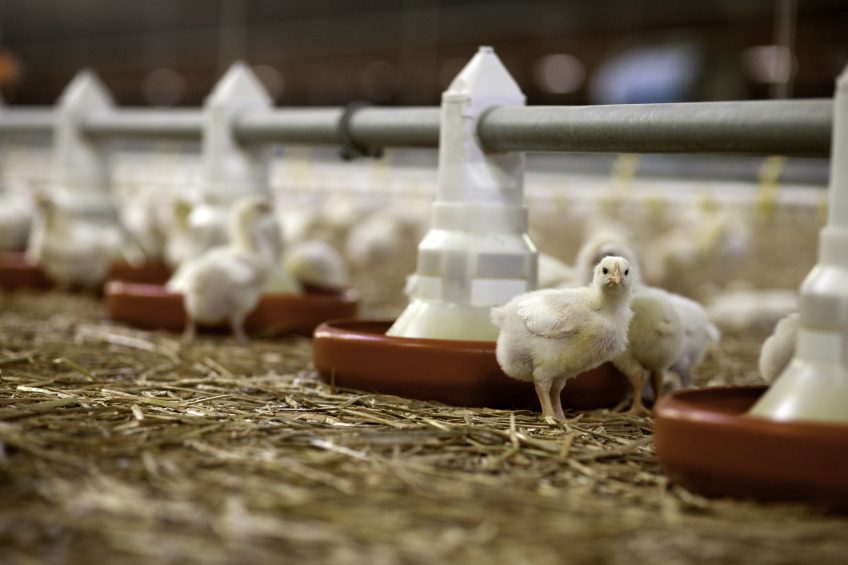Readying the gut for bacterial challenges

EU countries have reduced their dependency on antibiotics while maintaining highly productive and intensive systems. Functional feed additives have played a vital role in promoting gut health.
Antibiotic treatments have 2 opposite effects:
- first, the immediate effect of inhibiting bacterial growth and,
- second the long-term effect of promoting the evolution of resistance.
Microbials have different mechanisms for exchange of genetic information, which allows acquired resistance to expanding rapidly throughout a population. Resistance mechanisms may be either: intrinsically by mutating existing genes (vertical evolution), or by acquiring new genes from other strains or species (horizontal gene transfer) that may occur through conjugation, transformation, or transduction in response to selection pressures on a bacterial population.
The mechanisms that confer resistance to bacteria include:
- exclusion of the drug from the internal environment including multidrug efflux systems,
- enzymatic degradation, that inactivates antimicrobials through hydrolysis or chemical modification processes, and
- alteration of target proteins that are antimicrobial targets. Reduced antibiotic permeability is also a resistance mechanism for several classes of antibiotics, including the beta-lactam drugs, the aminoglycosides, chloramphenicol, and the quinolones.
There is evidence that suggests that reversing of antibiotic resistance in bacterial populations is feasible but this is dependent on the existent resistance mechanisms including the transition route of the species. The reduction of antibiotics combined with natural compounds, such as short and medium chain fatty acids and some botanical components has shown promising effects in reducing AMR. Some natural components might play an essential role in reversing antibiotic resistance by helping antibiotics recover their therapeutic functionality that has been compromised by an exponential rise in the number of antibiotic-resistant microbial strains. One example is precision delivery coated butyrate (PDCB, Adimix Precision) that can reduce (the consequences of) intestinal colonisation by certain bacterial species, by triggering eukaryotic and prokaryotic signalling, rather than by killing these bacteria as such. Some phytogenic molecules may disrupt the pathogenesis of bacteria through antimicrobial compounds or by their ability to enhance the activity of antibiotics. It has been reported that quorum sensing (cell-to-cell communication) inhibition may modulate the expression of antibiotic resistance as well as virulence genes.
Opportunities for alternatives
Functional feed additives have been gaining considerable interest because of their ability to improve performance by sustaining a healthy gut environment, optimum microbiota balance, and strong foundations for preventing intestinal colonization of enteric pathogens. However, the antibiotics and additives have very different characteristics. Often, when animal producers are faced with the need or the wish to reduce AGPs supplementation for the first time, several of them might feel tempted to look for ways to remove the antibiotics in the feed, just to replace them by other active ingredients which they hope will have the same effect. Similarly, some producers that want to minimise veterinary interventions, might try to apply feed additives to cure an upcoming disease, expecting they will act in similar ways as drug. These approaches, however, deny the fact that additives have different modes of action compared to antibiotics, and that a thorough understanding of these mechanisms is needed to use them in an optimal way.
Reducing dependency on AGPs
To illustrate this, in Figure 1, some of the modes of action of AGPs/antibiotics and gut health promoting feed additives are listed. Typically, some mechanisms are overlapping, while others are distinctive. Consequently, high-quality feed additives can be used to reduce dependency on AGPs: both products can be used in combination with each other, to provide a wider range of routes towards better health and growth. Alternatively, when the use of AGPs is forbidden or needs to be restricted, gut health promoting additives will be needed to fill this void and to deliver alternative pathways to boost animal performance.
Figure 1 – AGP’s and gut health promoting feed additives have modes of action that are partially similar, and partially different.

In a model for necrotic enteritis in broilers, for instance, supplementing challenged birds with PDCB had limited effects on the enumeration of Clostridium perfringens in the intestinal tract. However, PDCB-treatment birds had lower necrotic lesion scores. These results are in line with the hypothesis that butyrate, when directly delivered in the intestinal tract, prevents or repairs intestinal epithelial damage, thereby limiting nutrient loss and inflammation and as such restricting conditions that would favour the intestinal overgrowth of Clostridium in later life stages.
Similarly, PDCB can affect pathways in Campylobacter and Salmonella that will reduce invasion of epithelial cells, but it should not be used as an antibiotic drug to be applied in the final production stage only, in the hope to wipe out these zoonotic pathogens just before the animals are slaughtered. This is demonstrated by an experiment, where 0 or 3 kg/T of PDCB was added to several feeds of broilers infected with Campylobacter jejuni in the growing stage (Figure 2). When PDCB was added to all feeds, or from the moment onwards that birds where orally infected, caecal Campylobacter loads where significantly reduced compared to birds from the control treatment. However, inclusion of PDCB in only the starter feed and/or the finisher feed had a less profound impact on caecal Campylobacter counts.
In conclusion, antibiotics, whether applied as drugs or AGPs, can exert a specific and direct effect on enteric bacteria. The downside of this approach is that bacteria can build up resistance against certain drugs, jeopardising future treatment of humans and animals with antibiotics. Functional feed additives such as PDCB, on the other hand, do not cure acute bacterial challenges, but prepare the gastrointestinal tract of animals as good as possible to overcome negative consequences of certain diseases in a later life stage. As such, feed additives such as PDCB can be a safer way of raising animals with less antibiotics.












